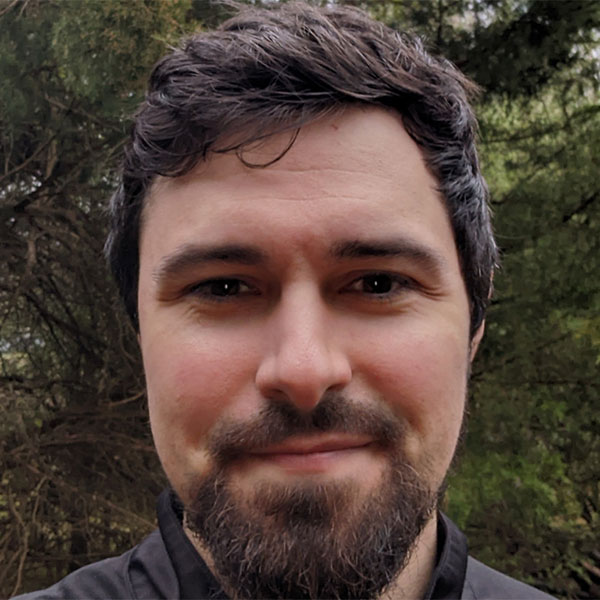Nicolas Saravia
GIS Consultant and Start Up Advisor

Education: Master of Geography (University of Bristol)
The following profile was compiled by Brendan Vander Weil (Texas State University) for the Encoding Geography initiative. To learn more, visit: https://www.ncrge.org/encoding-geography/
Please describe your job, employer, and the primary tasks you perform in your position.
I currently analyze transportation businesses and their innovations. On the side, I help micro-mobility start-ups by advising their leadership on how to improve their businesses in areas such as capital raising, operations, and data science. Most of my career has been at the intersection of operations, data analysis and business intelligence. I’ve also written tech patents to solve physical infrastructure issues with IoT and machine learning.
How has your education/background in geography prepared you for this position?
In my opinion, the ability to think spatially is a geographer’s greatest strength — the world is full of challenges that need 3D thinking to solve them efficiently. Through the course of my career, my strategy has shifted from viewing geocomputation tools as means on their own, to a more auxiliary, albeit important role. In many real-life business scenarios, one can solve spatial problems without geographical methods; however, in my case, geocomputation tools such as GIS, spatial statistics, and web mapping have certainly enabled me to find the needle in the haystack faster than otherwise and in a way that is visually compelling and factual.
What is an example of applying geography concepts and skills in order to analyze and solve problems in your work?
In businesses where you have physical assets, there is a real need to analyze the human and physical factors that affect the management of these across time and space. Human geography variables like population density, traffic patterns, and infrastructure may affect demand depending on the type of business. In my career, I’ve also focused on measuring the impact of physical geography and meteorological variables, everything from elevation to distinct weather variables and natural disasters.
What types of geographic questions did you ask and think about in your project?
The main questions I asked seek to answer how the different variables affect demand and supply in a business’s geography, which ultimately may impact the bottom line. I also look at how to optimize operations based on the analysis of the human and physical factors that affect the area. Additionally, I ask which methods should we use to predict external factors, and how do we balance speed and quality in results; how do we automate certain repetitive tasks without impacting costs; and what software/tools do we use to handle latency based on the amount of data we are processing?
What types of data did you acquire to support your project?
Being able to find reliable and open data is 90% of the battle in many startup jobs. In my case, I have heavily relied on free NOAA data for different weather variables and OpenStreetMap for infrastructure data (QGIS has a great plug in for that!). In larger companies and in consulting, there is sometimes the option to purchase big data, such as traffic flows. Familiarizing oneself with the nuances and quality issues of a dataset and being able to process that data with automation to remove any noise, will generally set up things for better decision making.
What types of content knowledge and skills (both geographic and more general) did you use to evaluate, process, and analyze the data you gathered for your project?
The foundational skill that is most practical in operations and data analysis is SQL. Start-ups generally rely on open-source software and tools to get the job done without impacting the team’s budget allocation. QGIS has been especially useful throughout my career, both for visualizing data and in running algorithms like k-nearest neighbor or performing spatial randomness experiments. Having had a prior understanding of the statistical methods that the tools run helps me understand what they are visualizing. This is significantly more important than knowing where the tools are located (which is more readily searchable). I generally have used the R language for statistical analysis of geographic data, and Python to automate repetitive tasks. Some knowledge of JavaScript has been useful, especially when visualizing results on a map platform like Leaflet. General business intelligence programs like Looker, PowerBI, or Tableau (this one has Leaflet plugins) are also good to have in the toolbox, especially when delivering results to executives. Having these listed on a resumé can open doors.
How did you communicate the results of your project (e.g., writing technical reports, making maps and geo-visualizations, creating graphics, data tables, etc.)? Do you have a recent product or publication to share with us as an example?
Throughout my career I’ve had to write standard operating procedures, technical whitepapers, and websites; however, much more frequently I’ve had to summarize large amounts of information in concise emails and bullet points, with a quick chart or map. I’ve found that results are most effectively communicated when they are direct, with clean and clear visualizations.
What are the criteria that you use to assess the quality of your results?
At a dataset level, keeping in mind sample size and implementing proper data cleaning and further investigating any observation errors. A/B testing is a great way to evaluate insights and decisions. It is always important to review results once they are in and do a proper post-mortem digging of what has changed in the data and measure the adjustments.
This material is based upon work supported by the National Science Foundation under Grants No. 2031418, 2031407, and 2031380 (Collaborative Research: Encoding Geography – Scaling up an RPP to achieve inclusive geocomputational education). Any opinions, findings, and conclusions or recommendations expressed in this material are those of the author(s) and do not necessarily reflect the views of the National Science Foundation